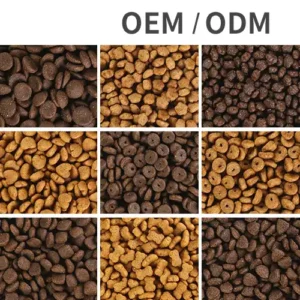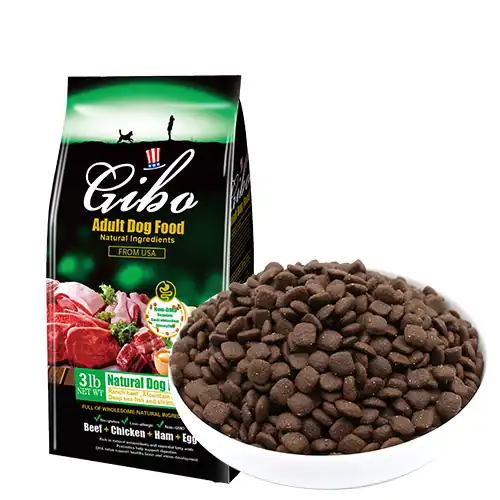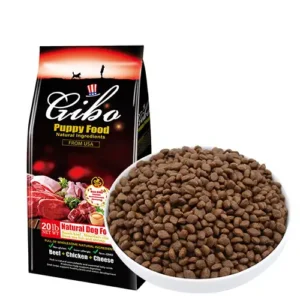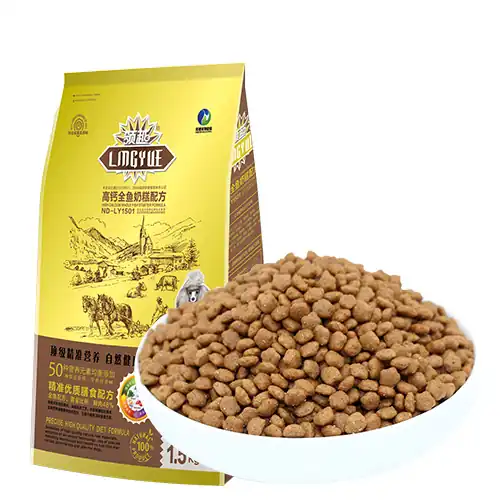There are actually a lot of details to pay attention to when feeding your puppy’s care, especially since puppies need more nutrients than dogs of other ages during their growth stage. How to choose the right feed for your little one? What are the precautions to take when feeding your puppy? We have reviewed many different brands of feeds to help moms and dads choose the right one for their puppies!
When new parents welcome their adorable puppies, they don’t realize that there are a lot of details to keep in mind when it comes to feeding your puppy! Puppies need more nutrients than dogs of other ages, especially during their growing years. How to choose the right feed for your little one? What are the most important things to keep in mind when feeding your puppy? We have reviewed a number of different brands of feeds to help moms and dads choose the right feeds for their puppies, so that they can accompany their dogs to grow up healthily and happily.
5 Key Points for Puppy Feed Selection

Puppy Feed Evaluation Point 1 – High Protein Content
Dogs under one year of age are considered puppies, and at this stage of their development they will need to rely on a large amount of protein to help with muscle, coat, immune system and brain development. Protein is an important nutritional consideration in the selection of puppy food, so it is recommended that the crude protein content of the feed should be 25% or more in order to meet the standards required by puppies. The source label should clearly indicate that the feed is made from high-quality proteins such as fish and meat.
Puppy Feed Evaluation Point 2 – Other Specialty Nutrients
DHA-rich fatty acid Omega-3 is not only an important source of nutrients for puppy brain development, but also helps to maintain the health of the puppy’s coat, moisturizing it and keeping it shiny; minerals such as copper, zinc, magnesium, and Vitamins A and D also play an important role in a puppy’s growth. For puppy bone development, balanced calcium and phosphorus are needed, and the best ratio of calcium to phosphorus in the feed is 1:1 or 2:1.
Puppy Feed Evaluation Point 3 – The Fewer the Artificial Additives, the Better
Sometimes, non-essential artificial additives may be added to the feed due to shelf-life issues, palatability and other factors. These additional artificial additives to the dog’s health, although there is no immediate harm, but there is not much good, so in the selection, to try to avoid choosing too many additives to the feed, the dog’s health is helpful oh!
Puppy Feed Evaluation Point 4 – Feed Hardness and Grain Size
When your puppy enters the weaning period, it will need to start eating feed, and the hardness and particle size of the feed will be one of the key points to pay attention to when selecting a feed. When choosing a feed for your puppy, it is recommended that you choose a feed with smaller particles to make it more palatable for your puppy, as his mouth and teeth are still relatively small. When your puppy starts teething, it will not be able to eat hard feeds, so it is recommended to soften the feeds with hot water for about 5-10 minutes before giving them to your puppy. Depending on your puppy’s teething status, gradually reduce the amount of softened feed and replace it with dry feed. Because puppies, like humans, have a so-called oral phase, if the feed is too soft, it may not satisfy the puppy’s oral phase and may lead to other behavioral or psychological problems.
Puppy Feed Evaluation Point 5 – Meets Nutritional Standards
Whether it’s for puppies, adults or senior dogs, it’s always a good idea to look at the nutritional standards set by the American Association of Feed Control Officials (AAFCO), which establishes maximum and minimum nutrient levels for children of all ages.
In addition, a U.S. pet care magazine (Whole Dog Journal) each year to evaluate and publish the year selected feed, which is many feeds will be labeled as the WDJ, the WDJ in the feed, basically will have a certain degree of quality assurance, and can be used as a reference for the selection of feed. However, since the WDJ is based on North American feed brands and feed brands from other countries do not participate in the competition, not being in the WDJ does not mean that the feed is bad!
Differences in Puppy, Adult, and Senior Dog Feeds

Each stage of the dog needs different nutritional requirements, and the American Association of Feed Control Councils (AAFCO) has standardized the nutritional standards applicable to and required by dogs of different ages, and dog parents can take this indicator as one of the references in the purchase of feed.
Key Points for Puppy Feed Selection
From birth to one year of age, puppies are growing rapidly and consume a lot of calories, so they need a lot of animal protein and fat.
There is a big difference between puppy and adult feeds in terms of amino acids, fats and minerals. A large amount of amino acids can help the puppy’s muscles and brain to develop, avoiding developmental delays or abnormalities; an active puppy also needs more fat than an adult dog to consume a large amount of calories; as for minerals, vitamins and other nutrients, they all need to be higher than in adult feeds, especially in terms of calcium, it is best for puppy feeds to have 1.2% calcium content (dry weight content) to meet their growth needs.
Adult Dog Feed Selection
In contrast to developing puppies and older dogs that require specific nutrients, adult dog feeds focus on maintaining the basic health needs of the dog. For example, animal protein and fat components in the adult dog feed will be less than the puppy, because at this time the dog needs is not a large number of intake of these nutrients, so if the adult dog has been eating puppy food, be careful may become fat dog, suffer from the problem of obesity Oh.
The key points of senior dog feed selection
In fact, the main ingredients of the feed for senior dogs are not too different from those of adult dogs, but because the activity level of senior dogs is even lower than that of adult dogs, the proportion of calories and protein in the feed will be lower than that of adult dogs, so as to avoid excessive calorie intake, which may lead to the problem of obesity. In terms of nutrients, such as lutein, fish oil, chondroitin and other nutrients that can maintain the joints and function of senior dogs will require a higher level of nutrients than adult dog feeds.
In addition, the digestive system of senior dogs is weakened due to aging, so it is recommended that the feed for senior dogs should be made with good protein and easy-to-digest staple foods, such as canned foods or other staple foods that contain probiotics, so that they can better absorb and reduce their digestive burdens.
How much feed should I give my puppy?

The amount of feed a puppy should be fed varies according to age, size, breed and brand of feed. It is rumored that the amount of feed a puppy should receive is either a fixed number of pieces at a time, or a head-sized amount at a meal, but these are actually not correct!
So how do you assess the safest amount of feed for your puppy?
The best way to do this is to refer to the recommended amount of feed on the package. Because each brand of feed has a different caloric density, most feeds provide about 4,000 calories per gram, but some brands of puppy feed only provide 2,000 calories per gram. The difference in calories per gram can be more than double, which can lead to malnutrition in growing puppies if the amount of food is not properly controlled.
How many times a day should I feed my puppy?
When feeding a puppy, there is a general rule that the younger the puppy, the more often it should be fed. Simply put, the best way to feed a puppy’s stomach is to feed it small amounts of food at frequent intervals. Since puppies don’t have teeth yet, and even if they do, their chewing ability and gastrointestinal system are still developing, so they can’t eat only 2 meals a day like an adult dog. The actual amount of food for puppies will vary slightly according to their size and breed, and the following is a list of some key areas for parents’ reference!
Puppies from birth to two weeks old: feed every 2-4 hours.
Puppies from 2 weeks to 4 weeks old: 4-5 meals a day.
Puppies before 6 months old: Recommended 4 meals per day.
Puppies 6 months to 11 months: 3 meals a day
Puppies over 11 months: 2 to 3 meals a day
Puppies are growing fast, do they need to be fed all the time?
Although puppies need a lot of nutrients as they grow, there is no such thing as too much of everything. If you feed your puppy more than the recommended amount of food on the package, your puppy may become a fat puppy, and the next step may be obesity or joint problems! Not only that, but if the food is constantly available, the dog may get the idea that there is always food available and not eat at the right time, which can lead to bad eating habits.
What should I do if my puppy won’t eat its food?

If your puppy suddenly stops eating, it may be due to a physical problem that is affecting his appetite, so we recommend that you seek medical attention as soon as possible to find out why. If there is no physical problem, there is a high probability that it is the feed! Just like human beings, the same food will get greasy after a long time, so we suggest owners to prepare two or three different kinds of feeds at a time and change the flavors regularly. This kind of feed rotation can help puppies take in different nutrients at the same time, and by rotating multiple feeds, you can also observe your puppy’s favorite tastes, which will help fur parents understand their dogs better.




